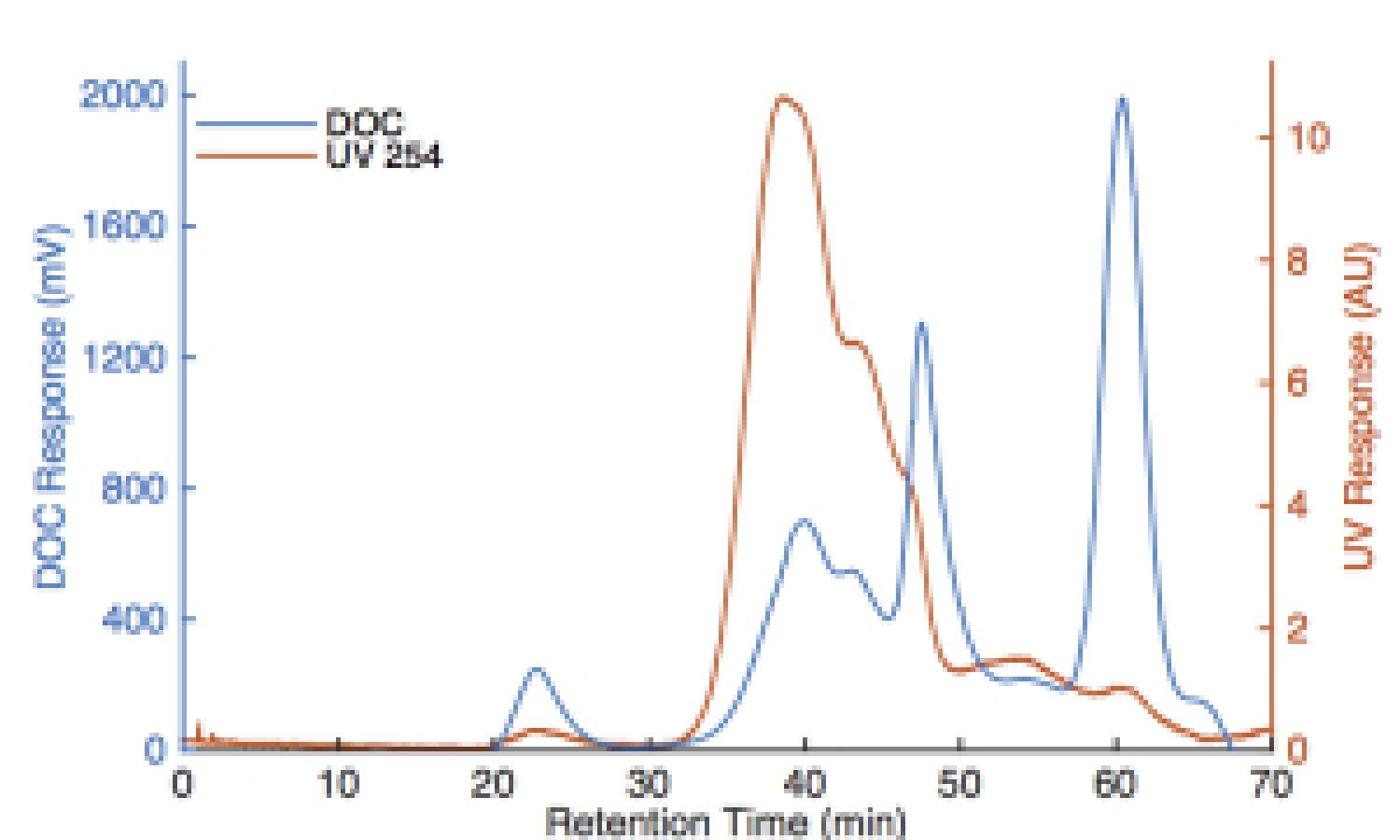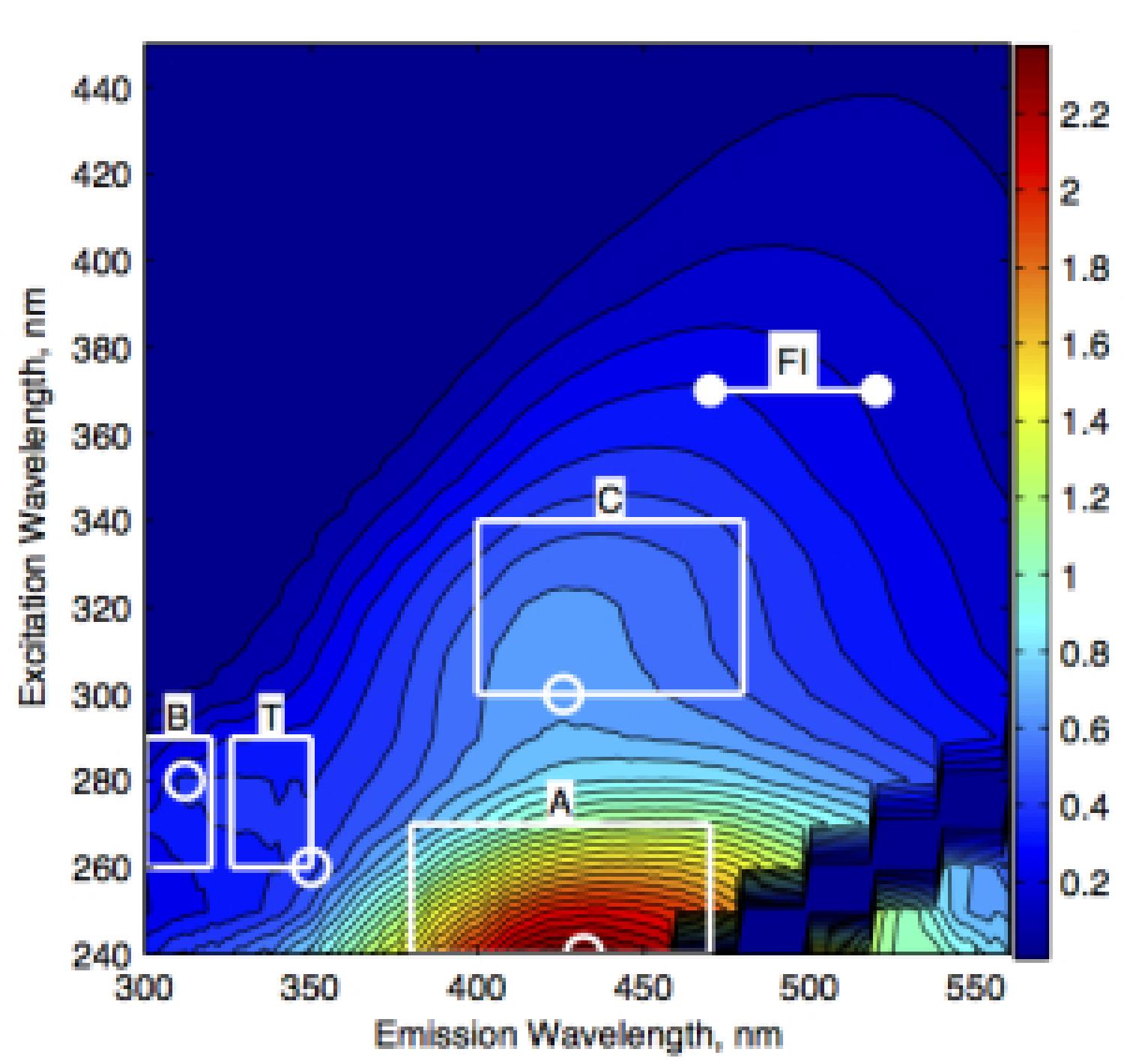Analytical and Water Quality Expertise

Our analytical lab runs many different techniques meant to address questions related to the characterization of organic matter (including dissolved organic matter (DOM), effluent organic matter (EfOM), algae derived organic matter (AOM) etc.), disinfection byproduct (DBP) formation potential, ozone demand/decay, evaluation of oxidation processes for the removal of organic contaminants, etc. We have experience working with government agencies, consulting firms and private institutes. Below is a list of the some of the techniques used in the lab. For more specific questions, including pricing, or to discuss a potential project, please contact Dr. Fernando Rosario-Ortiz.
Characterization of the molecular weight distribution of organic matter
Size exclusion chromatography (SEC) is a technique used to assess the molecular weight distribution of organic matter. The sample is injected into a column where it is separated by molecular weight, as shown in the figure below. We routinely run SEC characterization of organic matter samples from different locations with applications aimed at understanding the character and removal of organic matter in water treatment systems, source water quality and removal efficiency. We run SEC with UV-Vis and/or DOC quantification.

Optical characterization of organic matter
The characterization of the optical properties of organic matter are an emerging field of interest. The main driver is the potential to use optical sensors to monitor in real time the performance of an engineered system (e.g., oxidation of micro-contaminants, removal of DOM or EfOM, monitoring of levels of DOM or EfOM in distribution system) or to monitor variability in the levels and reactivity of organic matter in source waters. We use both UV-Vis absorbance and fluorescence to characterize organic matter and can conduct an evaluation of any specific application wanting to evaluate the potential use of optical parameters. We provide different parameters, including SUVA, fluorescence index, fluorescence quantum yields, fluorescence excitation emission matrixes (EEMs-see figure below) and assessment of specific wavelength ranges for the analysis of DOM.

DBP formation potential
The formation potential of DBPs in water is a critical parameter for drinking water systems. We have worked with different institutions on DBP projects, including the effects of wildfires on DBP formation, DBP formation of source waters for the development of aquatic standards and effect of treatment. We currently evaluate both carbon and nitrogen based DBPs.


